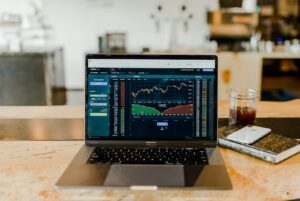Understanding Margin in Forex Trading: A Beginner’s Guide
Forex trading, also known as foreign exchange trading, is the buying and selling of currencies in the global marketplace. It has become increasingly popular in recent years due to its accessibility and potential for high returns. However, before diving into the world of forex trading, it is essential to understand the concept of margin and its role in this market.
Margin is a crucial aspect of forex trading that allows traders to control larger positions in the market with a relatively small amount of capital. It acts as a good faith deposit, or a collateral, that traders must provide to their brokers to open and maintain positions. By leveraging margin, traders can amplify their potential profits, but it also exposes them to greater risks.
To better understand margin, let’s take an example. Suppose you want to trade the EUR/USD currency pair, and the current exchange rate is 1.10. You believe that the euro will strengthen against the US dollar, so you decide to buy 10,000 euros. In a non-margin account, you would need the entire value of those euros, which would be $11,000 (10,000 euros x 1.10 exchange rate).
However, with margin trading, you only need a fraction of that amount to open the position. Let’s say your broker offers a 1:100 leverage ratio. This means that for every dollar you have in your trading account, you can control $100 in the forex market. In this case, you would only need $110 (1% of $11,000) as a margin requirement to open the position.
The concept of leverage allows traders to control larger positions, but it is important to understand that it works both ways. While it can magnify profits, it can also amplify losses. In the example above, if the euro weakens against the dollar and the exchange rate becomes 1.05, your 10,000 euros would be worth $10,500. If you decide to close the position at this point, you would have lost $500, which is 4.5% of your initial margin.
To protect themselves and the broker from potential losses, margin accounts have margin calls and stop-out levels. A margin call is a notification from the broker that the account’s margin level has fallen below a certain threshold, usually around 100%. When this happens, traders are required to deposit additional funds to meet the margin requirements. Failure to do so may result in the broker automatically closing out the positions to limit further losses.
The stop-out level is the margin level at which the broker automatically closes positions to prevent the account from falling into a negative balance. It is typically set at around 50% to 30% of the margin level. When the margin level reaches this level, the broker will begin closing positions, starting from the one with the largest loss.
It is crucial for beginner traders to understand the risks involved in margin trading and to have a clear risk management strategy in place. One common risk management technique is setting stop-loss orders, which are predetermined levels at which traders exit a losing trade. These orders automatically close the position when the price reaches a specified level, limiting potential losses.
Another important factor to consider when trading on margin is the concept of margin requirement and margin level. Margin requirement refers to the percentage of the total trade value that traders must have in their account as margin. Margin level, on the other hand, is the ratio of equity to margin expressed as a percentage. It is calculated by dividing the equity by the margin and multiplying by 100.
For example, if you have $10,000 in your trading account and your open positions require a total margin of $2,000, your margin level would be 500% ($10,000 / $2,000 x 100). A higher margin level indicates a safer position, while a lower margin level suggests higher risk and potential for a margin call.
In conclusion, understanding margin is crucial for beginner forex traders. It allows traders to control larger positions with a smaller amount of capital, but it also exposes them to increased risks. It is essential to have a clear risk management strategy, set stop-loss orders, and monitor margin levels to protect against potential losses. By understanding and effectively utilizing margin, traders can navigate the forex market with confidence and potentially achieve their financial goals.






